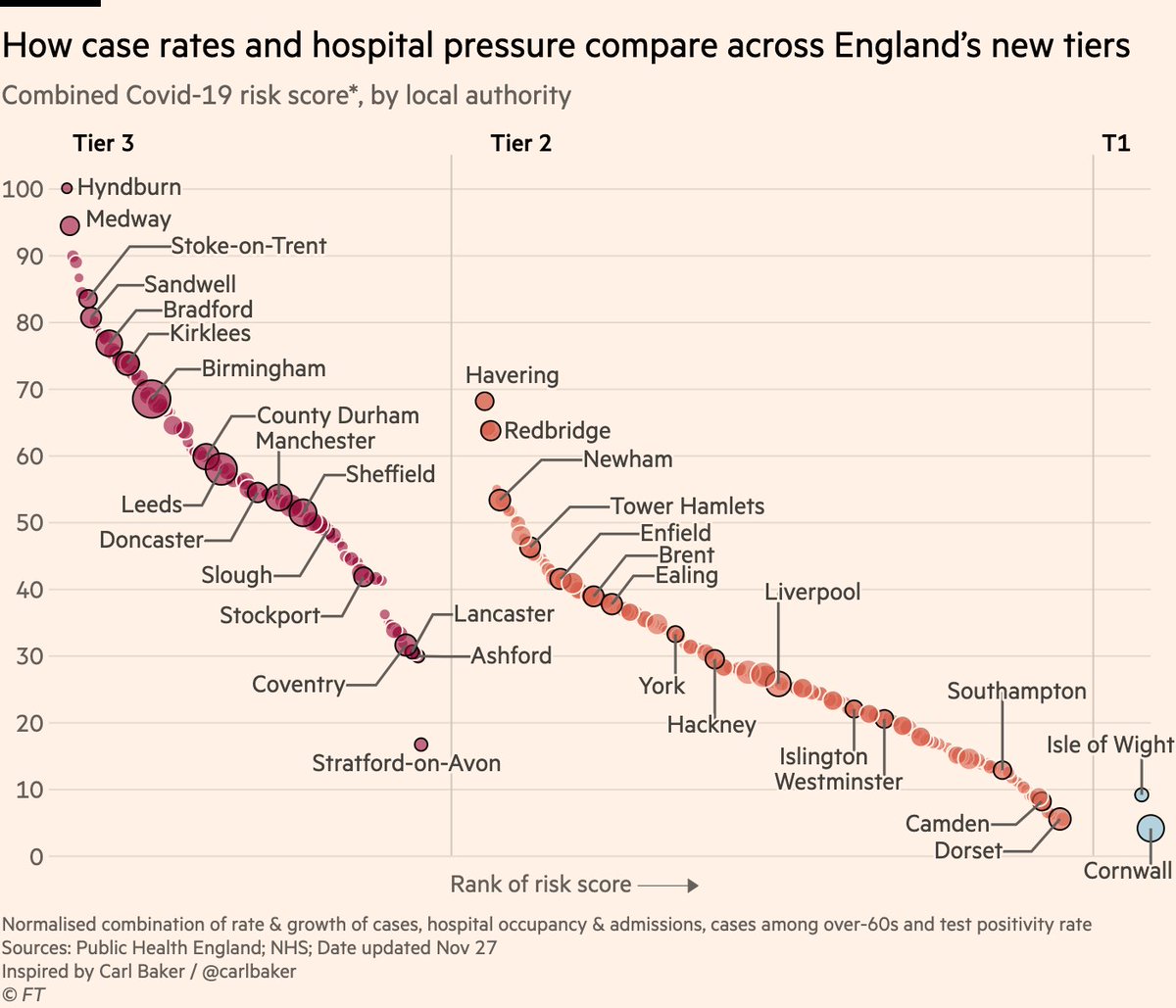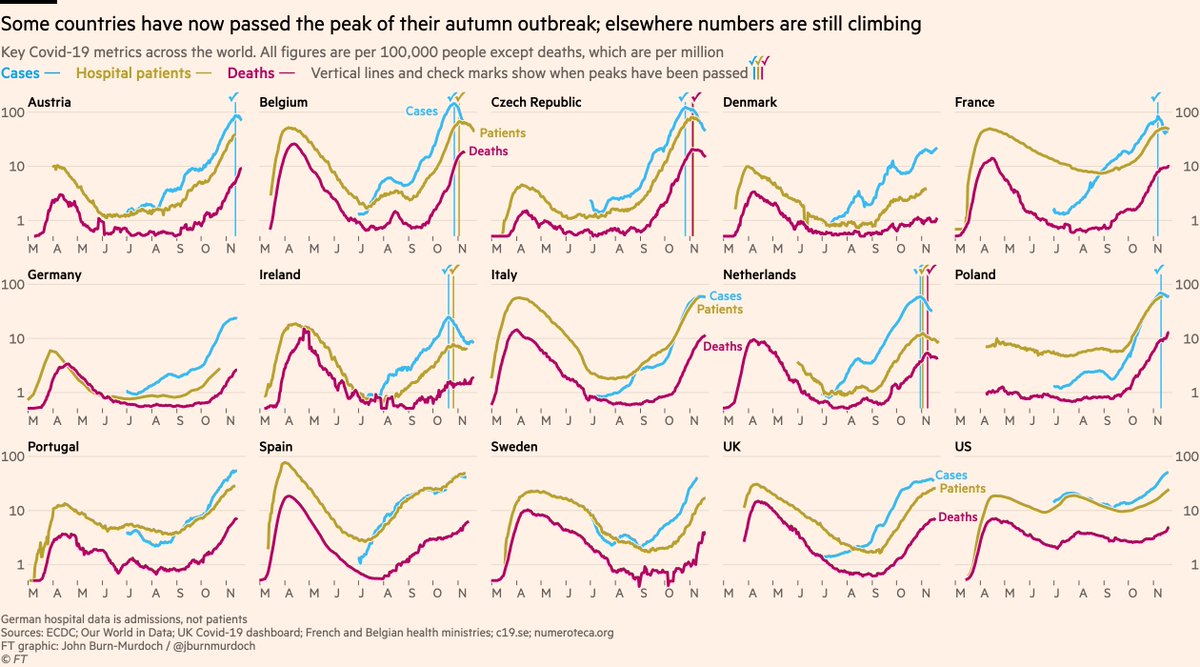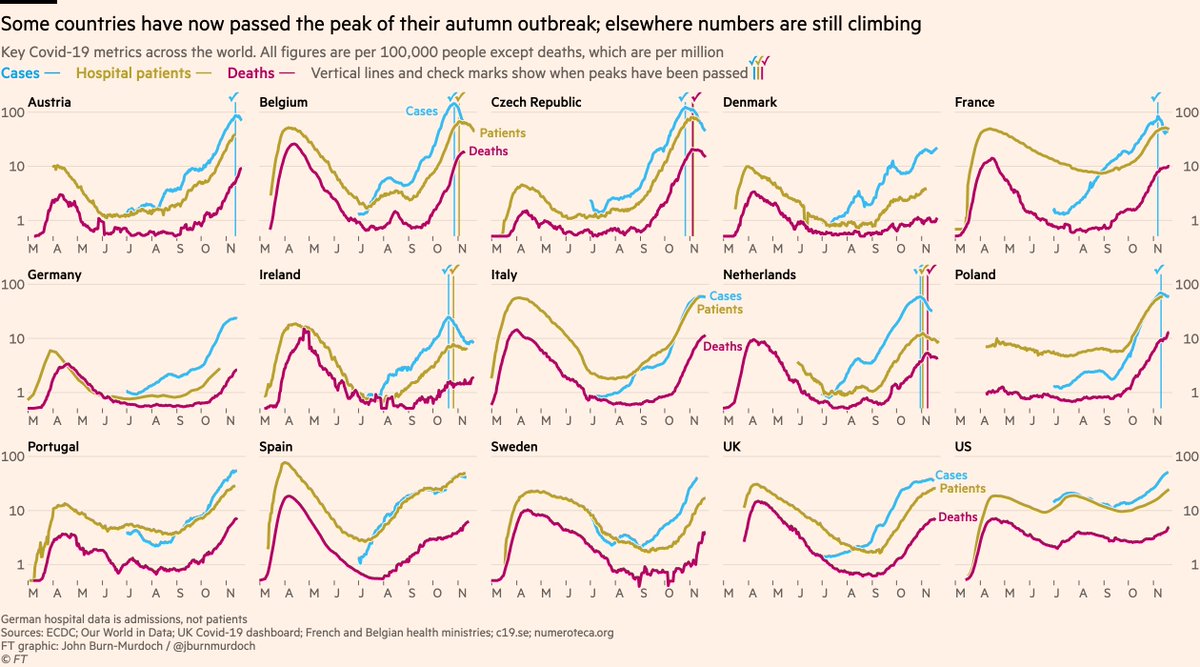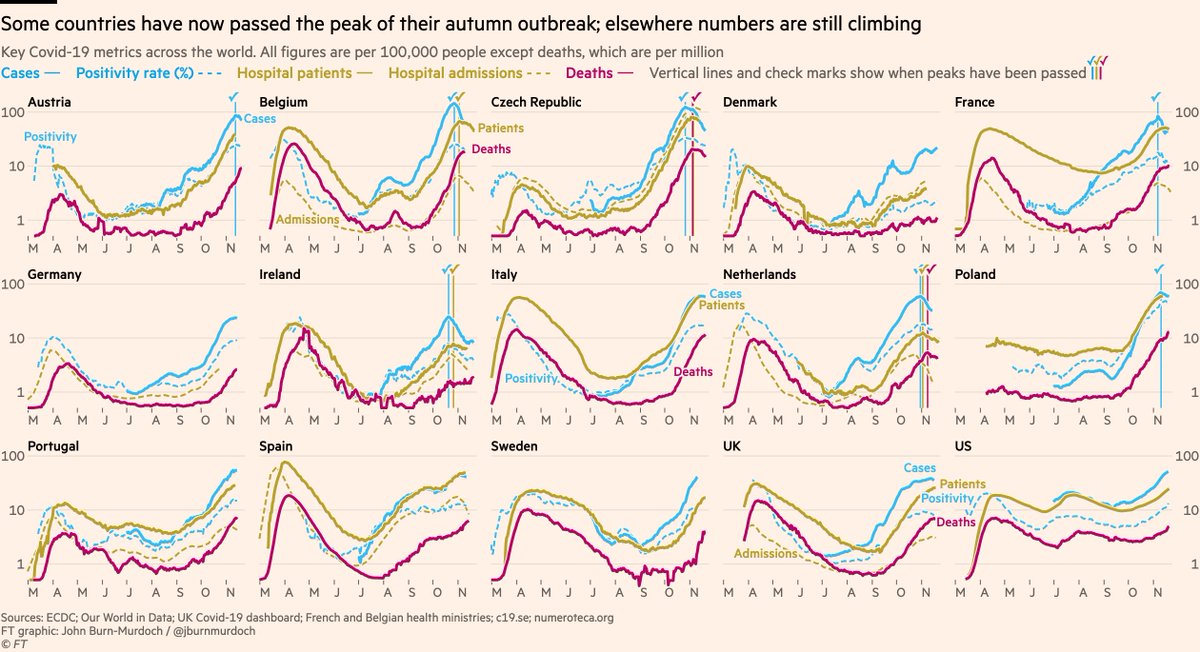
NEW: here’s how England’s restriction tiers have changed from pre-lockdown
Tier 3 now runs from coast to coast across most of the north, plus Bristol, Kent & Slough.
Almost everywhere else is in Tier 2, except Cornwall, Scilly and Isle of Wight.
Tier 3 now runs from coast to coast across most of the north, plus Bristol, Kent & Slough.
Almost everywhere else is in Tier 2, except Cornwall, Scilly and Isle of Wight.

Some places might feel hard done by:
Inspired @carlbaker’s brilliant charts, here is a comparison of the latest case rates across areas in each tier.
👀 several outer London boroughs (Tier 2) have higher rates than places in Tier 3, such as Manchester, Leeds and Sheffield
Inspired @carlbaker’s brilliant charts, here is a comparison of the latest case rates across areas in each tier.
👀 several outer London boroughs (Tier 2) have higher rates than places in Tier 3, such as Manchester, Leeds and Sheffield

Here’s our story: ft.com/content/62b566…
And here’s another chart comparing outbreak status across the tiers, but this time adding rate of change as well as current prevalence.
The people of Stratford-on-Avon can be forgiven for feeling a little miffed...
The people of Stratford-on-Avon can be forgiven for feeling a little miffed...

• • •
Missing some Tweet in this thread? You can try to
force a refresh












